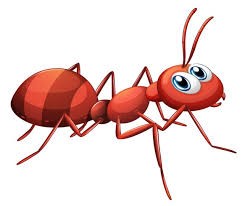Ants

With thousands of species on the planet, ants are one of the most successful insects on earth. Ants are not always destructive in the home garden, but can be a nuisance.
Ants on trees:
If you spot ants on your trees, this almost always is a sign of the presence of aphids. Aphids secrete a sweet sticky substance called honeydew, which ants eat. To control ants in this setting you have to control the aphids. First, inspect the foliage on your trees. Aphids are tiny pear-shaped pests and cling to the new growth along the stems or leaves. They're usually green, but can be yellow, grey, black or brown. Foliage will appear misshapen and may have a sticky sheen from honeydew. Control aphid outbreaks with a strong jet of water, insecticidal soap or in extreme cases, a systemic insecticide. Aphids rarely kill a plant, so depending on your tolerance, your trees will probably be fine with no action taken. Once the aphids are controlled, the ants will eventually leave the area in search of a new food source.
While the aphids are being controlled, a coating of sticky Tanglefoot™ can be spread around the trunk. This tacky substance will trap the ants preventing them from climbing the trees.
Ant hills:
Unless anthills are positioned near living spaces, the hills can be left alone. To get rid of anthill, use an ant bait like Amdro™ or Monterey™ Ant Control. The bait is collected by ants and then returned to the whole colony, killing them.



